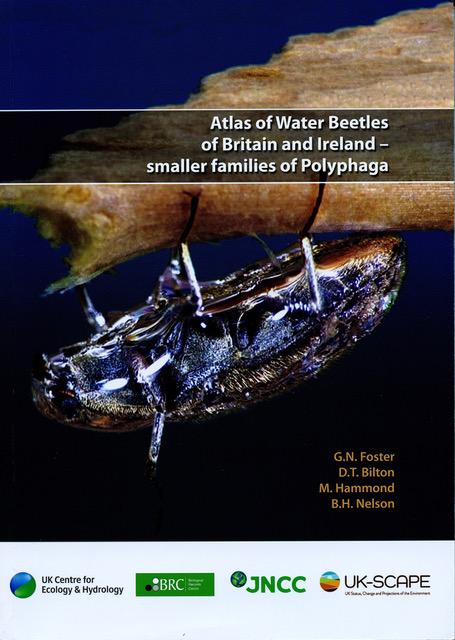G.N. Foster, D.T. Bilton, M. Hammond and B.H. Nelson.
F.S.C. Publications
2020
ISBN: 9781906698690
Reviewed by John Walters
This atlas covers 85 species in the families Hydraenidae, Elmidae, Dryopidae, Limnichidae, Heteroceridae and Psephenidae recorded in the British Isles. This includes the whole of Ireland and the Channel Islands.
These are small beetles that are often difficult to identify even for specialists.They are more often overlooked by general naturalists than the larger predatory water beetles, but deserve more attention. The names of over 300 recorders are given in the acknowledgements.
The introduction covers notes on identification and nomenclature, along with sources of available data and potential errors these may contain. There is also a section on phenology that is accompanied by a phenology table for those species with sufficient data to provide a meaningful result. This is followed by a table giving the conservation status for all the water beetles covered in this and the previous two volumes, published in 2016 and 2018. This provides a very useful source of information for anyone working on these beetles.
The distribution maps and species accounts provide the bulk of the book. These are clearly presented, with an introduction to each family and genus. As with the previous atlases on the predaceous and Hydrophiloid water beetles, this provides excellent information on identification and ecology, and the maps are accompanied by photos of typical habitats for many species.
Although the beetles covered here lack any large charismatic species, they include many that are useful indicators of habitat quality so are very useful for anyone evaluating the importance of aquatic habitats. They also include some very interesting species such the Ochthebius that inhabit saline habitats including rock pools and salt marsh, the strange looking long-legged Macronychus quadrituberculatus that clings to submerged tree trunks and roots, and our only flooded tree hole-dwelling beetle Prionocyphon serricornis. The larvae of many species have not been described, so provide opportunities for new discoveries. This book has inspired me to seek out these beetles and I highly recommend it to anyone with an interest in British beetles.


